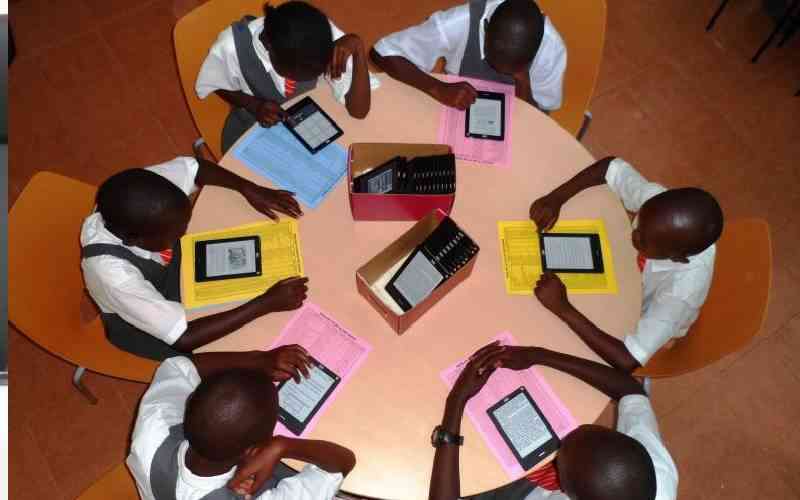
The Internet of Things (IoT) is a system of interrelated computing devices, mechanical and digital machines, objects, animals or people that are provided with unique identifiers. They have the ability to transfer data over a network without requiring human-to-human or human-to-computer interaction.
Research firm MarketsandMarkets forecasts the global IoT market size to reach $561 billion (Sh64 trillion) by 2022 from $170.6 billion (Sh19.4 trillion) in 2017, rising at a compound annual growth rate of 26.9 per cent during the forecast period.
With digital transformation accelerating, the benefits that IoT can give organisations, especially those reliant on data collected from Edge devices, are substantial. IoT can be better integrated into existing systems while remaining scalable for growth opportunities.
Africa being a developing continent has shown great promise in the past decade that can be seen in the continent’s eagerness to transcend into the Fourth Industrial Revolution.
The industrial revolution that global markets are experiencing today, commonly referred to as Industry 4.0, is powered by technological advancements that include IoT, smart manufacturing, robotics and Artificial Intelligence (AI), to name a few.
IoT, supervisory control and data acquisition and industrial IoT are transforming manufacturing by allowing for a connected experience that has streamlined and simplified many manufacturing processes.
This will become a critical technology to enable the continent to embrace a digitally transformed landscape.
Industry leaders and government policymakers need to be open-minded and embrace the fast-paced change of digital technology for IoT to be implemented correctly. These include laws and legal frameworks to support data-driven technologies and innovation-driven growth. With the right mix of policies, technology experts can reap the benefits of IoT and AI in years to come.
An IoT environment delivers more intelligence on the assembly line or in the manufacturing process. Furthermore, it allows for data analytics to be captured and used to provide feedback, advanced notifications, state of health and other forms of reporting to improve the process throughout manufacturing operations.
All these elements become vital enablers in developing economies across the continent.
So, technology companies must therefore take the time to integrate IoT into existing technology roadmaps. There are several challenges to the adoption of IoT, which include:
Security
One of the key concerns over the future of IoT devices is security. As more devices become interconnected, unless they are well-secured, it could cause enormous security issues, especially for businesses. Hackers could easily gain entry into an entire network if just one of the devices isn’t adequately protected. This means companies will need to spend a lot of money securing their IoT devices. The problem becomes even more concerning when you take into account that there is no concrete law that covers the numerous layers of IoT.
Speed and accessibility
Stay informed. Subscribe to our newsletter
The more devices are connected to a network, the slower it could become. Work will need to be done to improve speeds and businesses may want to consider switching to a wired, rather than a wireless network. Cloud architecture will also need to be upgraded. As it stands, the Cloud architecture can manage thousands, if not millions of devices. However, in future, they could end up having to support billions of devices.
Having so many devices connected at one time will prove problematic for existing servers. This also raises concerns over power supply and businesses will need to ensure they have a reliable source.
Compatibility
When it comes to actually connecting IoT devices, there are also likely to be issues with compatibility. This is because IoT is currently growing in so many different directions, so additional software and hardware will be needed to connect future devices. Issues could also be caused by diversity within operating systems, not enough standardised M2M protocols and non-unified cloud servers.
One of the area where IoT has grown in popularity over the past few years is financial technology (fintech). Companies here utilise the Internet, algorithms and software technologies to offer financial services to consumers.
Fintech organisations provide services that would usually be typically available within a traditional banking branch. Therefore, services such as loans, payments, investments and wealth management are now available through this industry vertical with the assistance of IoT. In addition, the other verticals that IoT will impact are agriculture and healthcare. By combining IoT with AI, the agriculture sector can benefit from optimal harvests to get advice on the best time to sow depending on weather conditions, soil and other indicators.
Agriculture can use these technologies to identify healthy and unhealthy crops, thereby triggering when pesticides should be sprayed with accuracy.
Adopting IoT technology can enable businesses to enhance their productivity and performance.
IoT devices streamline activities, collect data, monitor activities and provide useful insights.
IoT enables businesses to streamline their operations and utilise their resources effectively while gathering real-time information, allowing companies to explore and pursue new opportunities. While IoT adoption in Africa faces many hurdles with Internet penetration rates still low, there are some countries that are leading the way.
These include Kenya, South Africa, Rwanda, Mauritius and Seychelles, which have been addressing IoT as a priority. If IoT is to be successful, especially in rural areas, four issues must be addressed. These are; a more extended range for rural access; cost of hardware and services; limit dependency on proprietary infrastructures, and; provide local interaction models.
Looking ahead, IoT will impact the future of virtually every industry and every human being not only in Africa, but globally. IoT technology will continue to work as a technological innovator for the foreseeable future in Africa.
The writer is the chairman of BTN, an ICT provider in East Africa. ([email protected])
 The Standard Group Plc is a
multi-media organization with investments in media platforms spanning newspaper
print operations, television, radio broadcasting, digital and online services. The
Standard Group is recognized as a leading multi-media house in Kenya with a key
influence in matters of national and international interest.
The Standard Group Plc is a
multi-media organization with investments in media platforms spanning newspaper
print operations, television, radio broadcasting, digital and online services. The
Standard Group is recognized as a leading multi-media house in Kenya with a key
influence in matters of national and international interest.
 The Standard Group Plc is a
multi-media organization with investments in media platforms spanning newspaper
print operations, television, radio broadcasting, digital and online services. The
Standard Group is recognized as a leading multi-media house in Kenya with a key
influence in matters of national and international interest.
The Standard Group Plc is a
multi-media organization with investments in media platforms spanning newspaper
print operations, television, radio broadcasting, digital and online services. The
Standard Group is recognized as a leading multi-media house in Kenya with a key
influence in matters of national and international interest.









